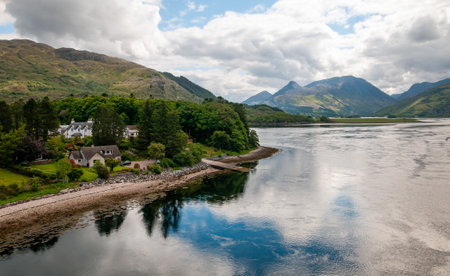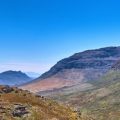Choosing Your Route and Destinations
Planning a multi-day wild camping adventure across the Scottish Highlands starts with picking your route. This magical region is dotted with both world-famous landmarks and secret hideaways, so it’s important to strike a balance between must-see locations and quieter, less-trodden paths. Begin by researching classic routes like the West Highland Way or the Cape Wrath Trail if you’re after a challenge and stunning vistas, but don’t overlook lesser-known areas such as Glen Affric or the Knoydart Peninsula—often described as Scotland’s last true wilderness.
When mapping out your journey, think about the typical weather patterns. The Highlands are renowned for their unpredictable climate; sunshine can swiftly give way to rain, mist, or even snow, especially in higher altitudes. Consider how this might affect river crossings, boggy ground, and visibility along the way. Make sure your daily distances are manageable for all members of your group, allowing time to savour the landscape and adapt to changing conditions.
It’s also wise to plot potential wild camping spots each night, ideally near water sources but away from popular tourist areas. This not only ensures a peaceful experience but helps protect sensitive habitats too. Remember to check local access rights and restrictions: while Scotland’s outdoor access laws are famously welcoming, certain areas may have seasonal limitations or conservation measures in place. With thoughtful planning, you can create an expedition that blends iconic Highland highlights with hidden gems, offering an unforgettable mix of adventure and tranquillity for your whole family.
Understanding the Right to Roam and Camping Codes
One of the most remarkable aspects of planning a wild camping expedition in the Scottish Highlands is Scotland’s progressive access laws, known as the “right to roam.” Under the Land Reform (Scotland) Act 2003, you are legally allowed to access most land and inland water for recreational purposes, including walking and wild camping. However, this freedom comes with responsibilities that are clearly outlined in the Scottish Outdoor Access Code.
Your Rights and Responsibilities
While the right to roam gives you wonderful opportunities for adventure, it’s crucial to understand what is—and isn’t—permitted. The Outdoor Access Code highlights how you can enjoy Scotland’s natural beauty responsibly. Here’s a summary of your main rights and duties:
| What You Can Do | What You Must Avoid |
|---|---|
| Camp on unenclosed land away from roads and buildings | Camping close to homes, schools, or working farms without permission |
| Leave no trace: remove all litter and belongings | Lighting fires where they could cause damage or leaving fire scars |
| Respect wildlife and livestock by keeping a safe distance | Disturbing wildlife or damaging habitats |
| Use stoves rather than open fires whenever possible | Polluting water sources or washing directly in streams and lochs |
Minimising Your Impact While Wild Camping
The heart of responsible wild camping is leaving nature just as you found it—or even better. This means following some simple but important steps:
- Pitch Late, Leave Early: Set up camp late in the day and move on early in the morning to minimise your presence.
- Select Durable Ground: Camp on grass or hard ground rather than fragile areas such as peat bogs or mossy sites.
- Bury Waste Properly: Use a trowel to dig a small hole at least 30 metres from any water source to bury human waste; pack out used toilet paper where possible.
- Avoid Large Groups: Keep group sizes small—ideally fewer than four tents—to reduce impact.
- No Trace Left Behind: Take everything home with you, including food scraps and rubbish. If you find litter left by others, consider picking it up too.
A Note About Fires
If you must have a fire, keep it small, use existing fire spots if available, and never cut live wood. Always ensure fires are fully extinguished before leaving.
Respecting Local Communities and Landowners
If you’re ever unsure about whether it’s appropriate to camp in a particular area, especially near farmland or crofting land, always seek local advice or ask permission. A friendly conversation goes a long way towards maintaining Scotland’s welcoming attitude towards outdoor explorers.
![]()
3. Essential Kit for Wild Camping in the Highlands
When setting out on a multi-day wild camping adventure across the Scottish Highlands, packing the right kit is key to both comfort and safety. The weather here is famously unpredictable—sunshine one moment and sheets of rain the next—so your gear needs to be up to the challenge. Below, we’ll walk you through the must-haves for tackling this beautiful but demanding landscape.
Recommended Gear
Start with a lightweight yet sturdy tent that can withstand strong winds and sudden downpours; a three-season tent with a reliable waterproof rating is your best bet. Choose a quality sleeping bag suitable for temperatures as low as 0°C, and pair it with an insulated sleeping mat for extra warmth and comfort. For cooking, opt for a compact stove and lightweight cookware—remember that open fires are discouraged in many areas to protect the environment.
Clothing Essentials
The secret to staying comfortable is layering. A moisture-wicking base layer will help keep you dry, while an insulating mid-layer (think fleece or lightweight down) adds warmth. Top this off with a fully waterproof jacket and overtrousers; Scottish rain can be relentless! Don’t forget wool socks, gloves, and a warm hat—even in summer, Highland nights can be chilly.
Footwear Matters
A sturdy pair of waterproof walking boots is essential for navigating boggy paths and rocky hills. Gaiters can also help keep water and grit out of your boots when crossing streams or trudging through heather.
Navigation Tools
The Highlands’ rugged terrain and frequent fog mean good navigation skills are vital. Always carry an Ordnance Survey map (paper maps don’t run out of battery!) and a reliable compass. While GPS devices or smartphone apps are handy, never rely solely on them—batteries drain fast in cold conditions.
Balancing Weight and Safety
Packing light is important, but never at the expense of safety. Prioritise multi-purpose items—a buff that works as both scarf and hat, or a headtorch with spare batteries doubling as campsite lighting. Keep your pack weight manageable by decanting toiletries into small containers and choosing dehydrated meals. Lastly, always include a basic first aid kit, emergency whistle, and foil blanket—you’ll rarely need them, but if you do, you’ll be glad they’re there!
4. Planning Food, Water, and Supplies
One of the most important aspects of a successful wild camping expedition across the Scottish Highlands is careful preparation of your meals, water, and essential supplies. The remote and unpredictable nature of the Highlands means you’ll need to be organised, resourceful, and eco-conscious throughout your journey.
Meal Planning for Energy and Simplicity
When planning your meals, aim for high-energy, lightweight options that are easy to prepare after a long day trekking through the hills. Consider dehydrated meals, instant porridge, flapjacks, oatcakes with cheese, nuts, dried fruits, and energy bars. If you enjoy a warm brew in the morning or evening, pack tea bags or instant coffee sachets—a comforting taste of home. Remember to portion your food carefully to avoid carrying unnecessary weight.
| Meal | Example | Preparation Time |
|---|---|---|
| Breakfast | Instant porridge & dried fruit | 5 mins |
| Lunch | Tortilla wraps with peanut butter & jam | 5 mins |
| Dinner | Dehydrated meal pack & oatcakes | 10 mins (boil water) |
Sourcing Water Safely in the Wild
The Scottish Highlands boast countless burns (streams), lochs, and rivers. However, always filter or boil any water before drinking to avoid harmful bacteria or parasites. Carry a reliable water filter or purification tablets. Plan your route around known water sources—OS maps often indicate these clearly—and always fill up before tackling longer stretches without obvious streams.
Water Purification Methods
- Boiling: Bring water to a rolling boil for at least one minute.
- Filtration: Use a portable filter designed to remove bacteria and protozoa.
- Pills/Drops: Add purification tablets or drops as per instructions; allow sufficient time before drinking.
Managing Rubbish Responsibly
The ‘Leave No Trace’ principle is key in the Highlands. Pack out all rubbish—including biodegradable waste like orange peels—and use resealable bags for storing litter until you can dispose of it properly. Avoid single-use plastics where possible and opt for reusable containers and cutlery. For human waste, carry a trowel to dig small holes away from water sources (at least 30 metres) and cover thoroughly afterwards.
Packing Essentials Checklist
- Lightweight stove & fuel (if cooking)
- Sufficient food for all days plus one emergency meal
- Water bottles/bladder (minimum 2L capacity)
- Pocket-sized water filter or purification tablets
- Bags for rubbish & toilet paper
A little forward planning goes a long way to ensure you remain well-fed, hydrated, and environmentally responsible during your Highland adventure. With thoughtful preparation, you’ll have more energy for exploring—and leave Scotland’s wild places just as beautiful as you found them.
5. Staying Safe and Navigating the Highlands
Essential Safety Precautions
Before setting off on your multi-day wild camping adventure across the Scottish Highlands, it’s crucial to prioritise safety. Always let someone know your planned route and estimated return time. Carry a fully charged mobile phone and consider a portable power bank or solar charger, but remember that signal can be patchy in remote areas. Pack a comprehensive first aid kit and know how to use it—brushing up on basic first aid skills is always wise.
Mastering Map and Compass Navigation
Highland landscapes are breathtaking but can be disorientating, especially in poor weather. Don’t rely solely on GPS devices; bring detailed Ordnance Survey maps and a reliable compass. Practise navigation skills before your trip, such as reading contour lines, plotting grid references, and using a compass for bearings. Mark potential escape routes and alternative paths in case you need to change plans quickly.
Staying Connected in Remote Areas
While solitude is part of the Highlands’ charm, staying in touch is important for peace of mind. In addition to your mobile phone, consider hiring or purchasing a personal locator beacon (PLB) or satellite communicator—these can alert emergency services if you’re in trouble far from civilisation. Check in with family or friends at agreed times where possible.
Being Prepared for Wildlife and Weather
The Highlands are home to unique wildlife—from curious red deer to midges and ticks. Wear long sleeves and trousers to protect against bites, and carry insect repellent. Store food securely away from your tent to avoid attracting animals. Scottish weather is famously unpredictable; pack layers, waterproofs, and spare dry clothing. Check forecasts regularly, but be ready for rapid changes—from glorious sunshine to sudden downpours or misty conditions.
A Family Approach: Learning Together
If you’re adventuring with children, turn safety into an engaging learning experience. Teach them how to read simple map features, recognise local plants and animals, and understand the importance of keeping close in unfamiliar terrain. By preparing together, you’ll all feel more confident—and enjoy every wild moment the Highlands have to offer.
6. Building Confidence and Enjoying the Experience
Heading out on a multi-day wild camping adventure across the Scottish Highlands isn’t just about ticking off summits or covering long distances—it’s also about nurturing confidence, togetherness, and a sense of wonder for Scotland’s breathtaking wild places. Whether you’re a family with children, a beginner camper, or a young adventurer eager to explore, this journey can be both empowering and unforgettable.
Start Small and Celebrate Progress
If it’s your first time, begin with shorter routes and gradually build up to more challenging expeditions. Each successful night under canvas is a milestone worth celebrating—perhaps with a special treat or a story shared around the campfire. These small victories help everyone, especially younger campers, feel proud and motivated to try new things.
Learn Skills Together
Use your time in the Highlands as an opportunity to learn essential outdoor skills as a family or group. Map reading, pitching tents in unpredictable weather, cooking simple meals on a camp stove—all these are valuable lessons that build independence and self-assurance. Encourage everyone to take turns leading or making decisions; even little ones can help gather firewood or spot waymarks along the path.
Boost Morale With Fun and Encouragement
Keep spirits high by mixing in games, challenges, and storytelling. Highland folklore, treasure hunts among the heather, or friendly competitions like ‘who can spot the most wildlife’ add a sense of adventure to each day. Remember to check in regularly with each other—sometimes all it takes is a warm cup of tea or a silly song to lift tired feet and faces.
Create Lasting Memories
The Scottish Highlands are full of magic—misty lochs, ancient forests, and mountains that seem to go on forever. Take time to pause, breathe in the fresh air, and soak up these moments together. Capture memories with photos, sketches, or by writing in a shared journal. These experiences aren’t just about survival—they’re stories you’ll cherish for years to come.
Foster Respect for Nature
Instil a love for Scotland’s landscapes by practising Leave No Trace principles and talking about local wildlife and plants. Young adventurers will remember not just the fun they had but also the care they took to protect these wild spaces for future explorers.
By building skills side by side, supporting one another through challenges, and taking time to appreciate the beauty around you, your multi-day wild camping expedition becomes much more than a trip—it becomes an adventure that inspires confidence, joy, and lifelong connection with Scotland’s wild heart.


